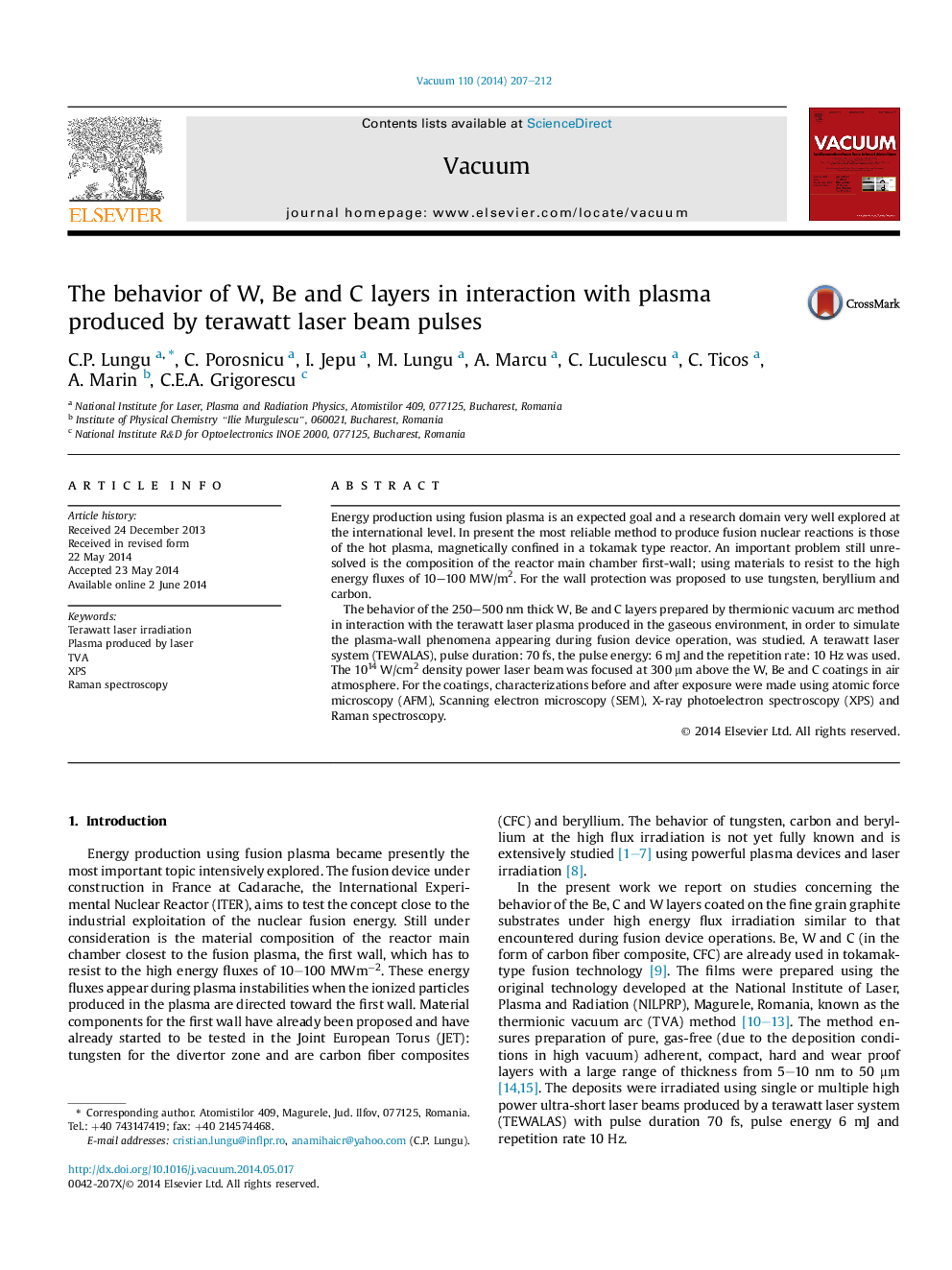| Article ID | Journal | Published Year | Pages | File Type |
|---|---|---|---|---|
| 1689558 | Vacuum | 2014 | 6 Pages |
•W, Be and C materials for fusion were indirectly irradiated in air by terawatt laser beams.•Periodic striations were produced on the W films.•BeO, WO3 and W3O9 oxides were formed on the top layer of Be and W films.•Sp3 carbon bonding concentration increased due to the plasma impact on the C films.
Energy production using fusion plasma is an expected goal and a research domain very well explored at the international level. In present the most reliable method to produce fusion nuclear reactions is those of the hot plasma, magnetically confined in a tokamak type reactor. An important problem still unresolved is the composition of the reactor main chamber first-wall; using materials to resist to the high energy fluxes of 10–100 MW/m2. For the wall protection was proposed to use tungsten, beryllium and carbon.The behavior of the 250–500 nm thick W, Be and C layers prepared by thermionic vacuum arc method in interaction with the terawatt laser plasma produced in the gaseous environment, in order to simulate the plasma-wall phenomena appearing during fusion device operation, was studied. A terawatt laser system (TEWALAS), pulse duration: 70 fs, the pulse energy: 6 mJ and the repetition rate: 10 Hz was used. The 1014 W/cm2 density power laser beam was focused at 300 μm above the W, Be and C coatings in air atmosphere. For the coatings, characterizations before and after exposure were made using atomic force microscopy (AFM), Scanning electron microscopy (SEM), X-ray photoelectron spectroscopy (XPS) and Raman spectroscopy.
